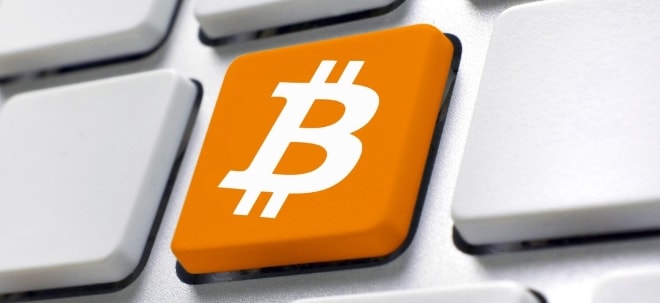EMIR 3.0 active accounts are set to change the European clearing landscape: are you ready?
Werte in diesem Artikel
Account activationEMIR 3.0 is currently awaiting the formal EU parliamentary approval of the Level 1 text, after which it will be published in the Official Journal of the European Union. This is expected in Q4, meaning that final effectiveness to comply with the active account requirements will likely be in Q2 2025.All EU market participants that meet the clearing thresholds for OTC IRD in euro and zloty as well as Euro STIR (Short-Term Interest Rate derivatives like Euribor and €STR Futures) are in scope of the requirements.A challenge for firms preparing for EMIR 3.0 today is that further specifications of the Level 1 text are currently prepared by the EU market authority ESMA. The regulation contains both quantitative and qualitative requirements governing the definition of an “active account”.On the qualitative side, entities not only need to set-up an account with an EU based CCP, but for example will have to demonstrate that they are able to do all new business and are able to move their entire book of in-scope products to an EU central clearing house (CCP) at short notice, if needed. What steps an in-scope market participant needs to take to prove this to the satisfaction of their local prudential regulator is currently specified by ESMA.In terms of the quantitative requirements, EMIR 3.0 sets out three classes of derivatives contracts for the products in scope, with a maximum of five subcategories per class.The Level 1 text specifies that firms will need to clear at least five trades per subcategory over a specific period – ranging from one to six months depending on the size of the firm’s derivatives exposures.All details and further definitions will be addressed as ESMA finalizes the technical standards in the Level 2 text, but the basic requirements are clear and firms should not lose time to get started.Across the market, preparations are underway. Eurex is seeing continuous onboarding from market participants, but there is still some way to go, says Matthias Graulich, chief strategy officer and Member of the Executive Board at Eurex Clearing.“We expect to see a significant uptick in onboarding early next year. By our reckoning, there are around three to four hundred clients that still need to be onboarded,” he says.Once there is clarity on the technical standards and the exact timeline for implementation, Eurex will clarify with clients the deadline for firms to start onboarding, to ensure they meet the deadline.“While we will do all we can to accommodate everyone, firms that only start the process at the last-minute risk not being compliant in time,” says Graulich. Changing landscapeWhat is clear today is that EMIR 3.0 will likely fundamentally change the landscape for clearing euro-denominated derivatives.Historically, liquidity in euro-denominated swaps and futures clearing has been split across Europe, with OTC swaps and short-term interest rate listed (STIRs) derivatives being cleared and traded in different pools in the UK and longer-term interest rate derivatives traded and cleared at Eurex. Pooling these products to a larger degree within an EU based market infrastructure brings two benefits at the same time:Higher efficiencies for market participants and consequently lower costs for both the buy- and the sell-side and at the same timeAddressing concerns amongst policymakers and authorities strengthening financial market stability.Higher efficiencies will be driven by the possibility to multilateral net exposures across products and across the full euro yield curve bringing down capital, margin and collateral costs.Over the past 12 months, Eurex has seen continued growth in OTC clearing volumes in euro-denominated swaps as well as STIR products strengthens its proposition building out its aspiration to become the “home of the euro yield curve”.“The EMIR 3.0 Active Account requirement should be seen as a trigger to increase efficiencies,” says Graulich.“Indeed, there are a number of benefits in the form of margin efficiency and further cost savings with our integrated repo funding service. Therefore, firms that have to clear at an EU CCP should take advantage of the benefits and move pro-actively Euro denominated derivatives to Eurex Clearing in order to optimize their books.”Long term impactSome concerns have been raised in the market over the timeline for implementation and the potential for long-term fragmentation of liquidity. The former has been addressed to a large extent by the fact that the six-month implementation timeline did not begin before the summer as some had feared and firms are now expected to have until Q2 2025 to comply.In terms of the fragmentation, Graulich says that this is not something that should concern the market.“The euro swaps market is even bigger than the dollar market and there is certainly room for two pools of liquidity. Maintaining both options allows for the highest efficiency level for portfolios with multiple products and multiple currencies – some elements of the portfolio gain greater efficiency from margining across euro-denominated products while other parts will have offsets against dollar or sterling swaps.”“As the level of sophistication around margin optimization increases, I think the market will have two liquidity pools in the long-term. Indeed, splitting it into two pools could create more efficiency as firms have a choice on a trade-by-trade basis of where they can get the most margin efficiency,” he says.“The Eurex strategy to be the ‘Home of the Euro Yield Curve’, nicely aligns with the objectives of regulators and authorities; this fact set the basis for getting compliant with the regulatory requirements and at the same time getting more efficient.”First published by The Desk on 2 October 2024Weiter zum vollständigen Artikel bei Deutsche Boerse AG Unsponsored American Deposit
Ausgewählte Hebelprodukte auf Deutsche Börse
Mit Knock-outs können spekulative Anleger überproportional an Kursbewegungen partizipieren. Wählen Sie einfach den gewünschten Hebel und wir zeigen Ihnen passende Open-End Produkte auf Deutsche Börse
Der Hebel muss zwischen 2 und 20 liegen
| Name | Hebel | KO | Emittent |
|---|
| Name | Hebel | KO | Emittent |
|---|
Quelle: EN, Deutsche Boerse
Nachrichten zu Deutsche Börse AG
Analysen zu Deutsche Börse AG
| Datum | Rating | Analyst | |
|---|---|---|---|
| 04.11.2024 | Deutsche Börse Neutral | JP Morgan Chase & Co. | |
| 31.10.2024 | Deutsche Börse Buy | Deutsche Bank AG | |
| 25.10.2024 | Deutsche Börse Sector Perform | RBC Capital Markets | |
| 24.10.2024 | Deutsche Börse Kaufen | DZ BANK | |
| 23.10.2024 | Deutsche Börse Buy | Deutsche Bank AG |
| Datum | Rating | Analyst | |
|---|---|---|---|
| 31.10.2024 | Deutsche Börse Buy | Deutsche Bank AG | |
| 24.10.2024 | Deutsche Börse Kaufen | DZ BANK | |
| 23.10.2024 | Deutsche Börse Buy | Deutsche Bank AG | |
| 23.10.2024 | Deutsche Börse Buy | Warburg Research | |
| 23.10.2024 | Deutsche Börse Buy | UBS AG |
| Datum | Rating | Analyst | |
|---|---|---|---|
| 04.11.2024 | Deutsche Börse Neutral | JP Morgan Chase & Co. | |
| 25.10.2024 | Deutsche Börse Sector Perform | RBC Capital Markets | |
| 23.10.2024 | Deutsche Börse Sector Perform | RBC Capital Markets | |
| 23.10.2024 | Deutsche Börse Hold | Jefferies & Company Inc. | |
| 22.10.2024 | Deutsche Börse Neutral | JP Morgan Chase & Co. |
| Datum | Rating | Analyst | |
|---|---|---|---|
| 30.07.2020 | Deutsche Börse Sell | Warburg Research | |
| 15.07.2020 | Deutsche Börse Sell | Warburg Research | |
| 24.02.2020 | Deutsche Börse Sell | Joh. Berenberg, Gossler & Co. KG (Berenberg Bank) | |
| 04.12.2019 | Deutsche Börse Sell | Joh. Berenberg, Gossler & Co. KG (Berenberg Bank) | |
| 30.10.2019 | Deutsche Börse Sell | Joh. Berenberg, Gossler & Co. KG (Berenberg Bank) |
Um die Übersicht zu verbessern, haben Sie die Möglichkeit, die Analysen für Deutsche Börse AG nach folgenden Kriterien zu filtern.
Alle: Alle Empfehlungen


